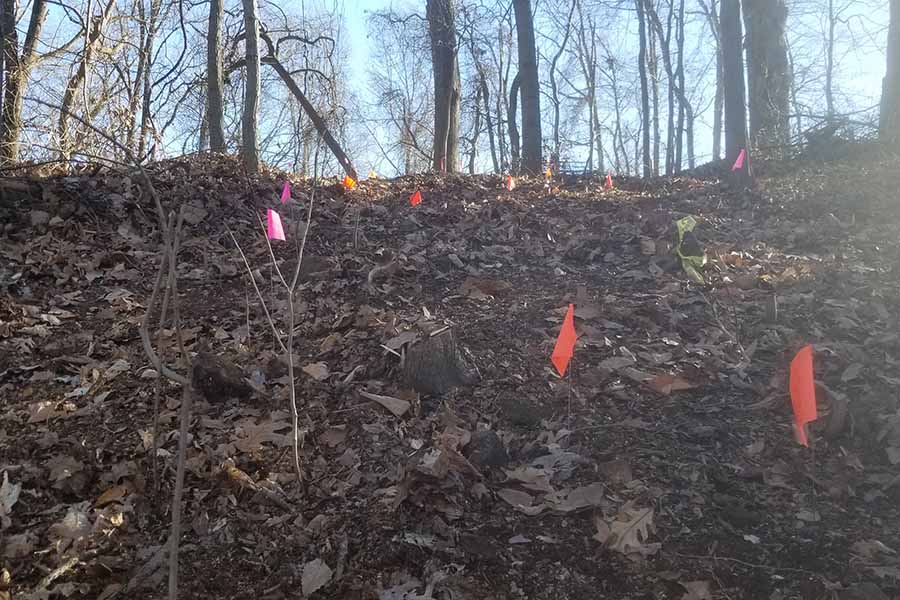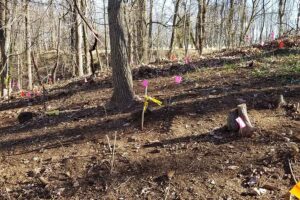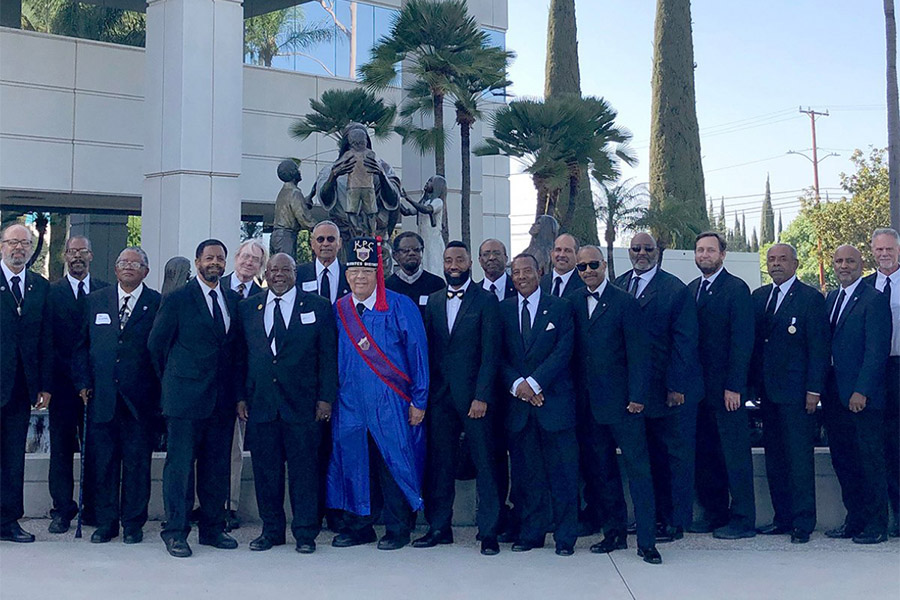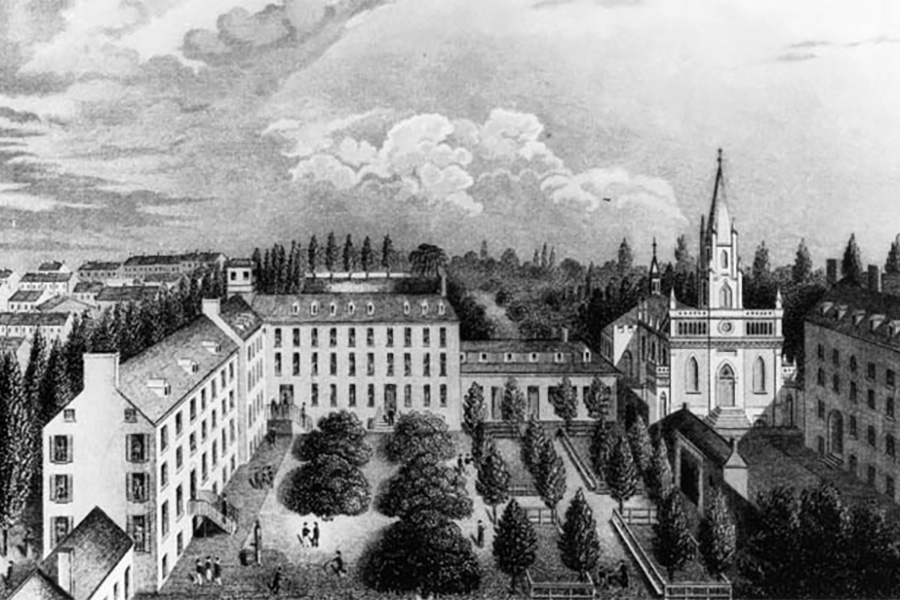History is slowly being unearthed at Sacred Heart Chapel in Bowie, and a Jesuit parish in Baltimore is a part of it.
Recently, numerous unmarked gravesites were discovered in the wooded area surrounding the chapel, likely the final resting place of enslaved people who toiled on the property hundreds of years ago.
The land where the church currently sits was once known as White Marsh, a 2,000-acre Jesuit-owned plantation that housed hundreds of slaves.
Word of the discovery soon made its way to Jesuit Father Brian Frain, pastor of St. Ignatius. He felt it was imperative that his church assist in any way possible in the efforts to clean up the gravesites and locate headstones.

“I thought it was important for the parish to be involved,” Father Frain said. “It’s a work of justice to remember the dead, especially those who weren’t remembered as we should’ve remembered them.”
Baltimore’s St. Ignatius Church was built in 1856 and was paid off by the Jesuits, Father Frain said. It’s not a stretch of the imagination, he said, to assume that some of the money used to pay off the church is directly linked to the slaves at the White Marsh plantation, furthering his commitment to being involved in the renovation of the gravesites.
A number of volunteers from the church traveled to the location of the discovered graves on Martin Luther King Jr. Day for a service project. Thus far, hundreds of gravesites have been located, marked with pink or orange ribbons. For Father Frain, it was a mission he had to experience firsthand.
“I needed to do this personally,” he said. “I needed to look at the beauty of the place, one of the first chapels that was raised up in the 1700s, and also see that this is part of its history, and not all of it is as beautiful now, with a 21st-century lens. There are some challenges in looking at it.”
Kevin and Kendall Burdinski also took part in the service project in January. Serving as co-chairs of the church’s anti-racism taskforce, they both felt it was their duty as Catholics to participate.
“You can’t be truly Catholic if you’re not pursuing justice and recognizing and reconciling with the history of our faith,” Kendall said. “As a Jesuit parish of Baltimore, this is something we need to be a part of and contribute to significantly.”
A second service trip was taken to the location in February, with more trips anticipated in the future. With only a small percentage of the wooded area having been explored thus far, this project will be ongoing, with Kendall stating the scope of it continues to grow and develop.
Kevin stressed the importance of recognizing past racial injustices committed by the church in order to ensure those systems are not still in place going forward.
“As Catholics, we are called to do works of justice and look in the face of the systems in place that enabled people to be suppressed,” he said. “This is part of that core history. We can’t pursue true justice without knowing, understanding, and appreciating the history of what’s happened. We have to tackle it at its core – both with the Jesuits here in Maryland and with the archdiocese in general.”
Sacred Heart, which was originally part of the Archdiocese of Baltimore, is now located in the Archdiocese of Washington.
To read more on the cemetery at Sacred Heart in Bowie, visit:
Cardinal Gregory leads prayer service for enslaved African Americans buried in Sacred Heart Parish’s cemetery in Bowie
Read More Racial Justice
Copyright © 2023 Catholic Review Media







